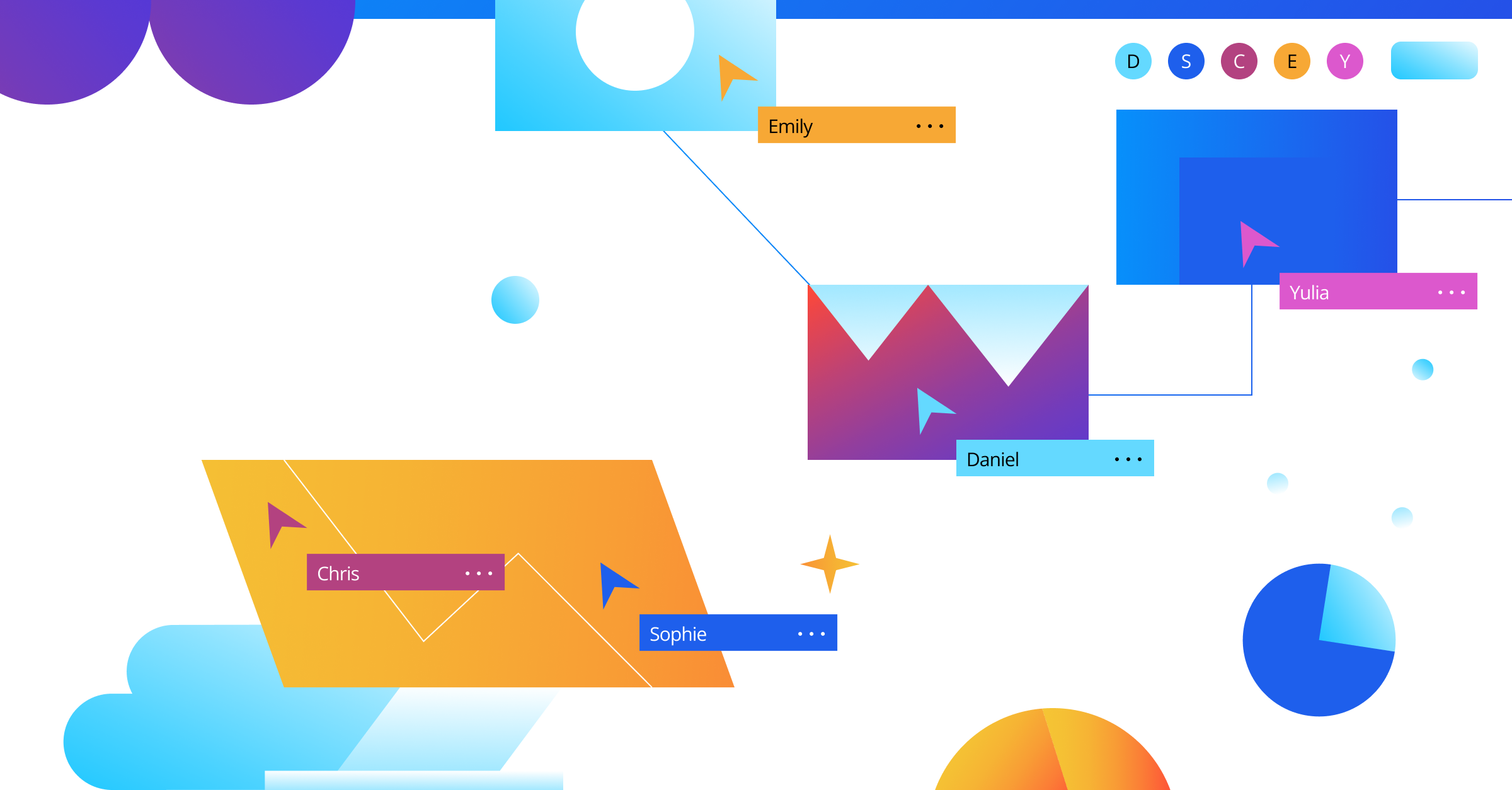
Turning the corner into 2022, I have noticed a forward-looking curiosity in my design clients as they prepare to leave the decade’s early struggles behind and meet the approaching opportunities head on. In the same vein, the students and emerging designers I speak with are excited about how the tech industry will adapt to changes in user behavior in the upcoming year. To steer the conversation, I have collected my forecast of the top five UX trends you should keep an eye out for in 2022.
1. Design thinking for the metaverse

As the new year unfolds, we find the UX world is preoccupied with the approaching metaverse, the notion of an immersive virtual world, long imagined in science fiction is seemingly within reach of our current consumer technology.
Perhaps, fuelled by an escapist desire to transcend our interminable pandemic-era restrictions, the demand for mixed reality headsets has skyrocketed, intensifying fierce competition among companies in the emerging technology market. Value offerings like Facebook’s Oculus Quest prove that a viable, mixed-reality experience can be attained even on a modest household budget, priming the world for an upcoming transformation, like the global smartphone revolution, a decade ago. As more curious minds embrace the technology and consider its useful applications, we can expect to see mixed reality experiences expand its reach far beyond current gaming and entertainment into more consequential use cases.
User experience design for mixed reality is only just hitting its stride. It will soon be accelerated by headset platforms publishing design resources and guidelines for the developer community. A market of design tool offerings will soon appear to facilitate more rapid prototyping of early mixed-reality concepts for quick testing and iteration. With UX designers shifting from two-dimension (2D) to three-dimension (3D) media, there will be an increasing need for UX designers to also have a good grasp on filmmaking — an awareness of camera angle, set design, and lighting — as well as the soft skills necessary to collaborate with 3D artists and developers.
2. Don’t make me move

Even while mixed reality engages users in a full-bodied, calorie-burning paradigm of interaction, the pendulum will swing the other way when it comes to executing routine tasks. As our screen time has soared in the 2020’s, so has constant muscle fatigue from the fine motor movements of swiping, tapping, and typing. Forget about the “don’t make me think” approach — the future of transactional interactions is a quest for a pure effortlessness that will approach motionlessness.
Advancements in Artificial Intelligence (AI) have finally enabled effort-saving technologies of voice command and predictive input to reach the tipping point from being simply annoying to becoming genuinely convenient. This year will see UX designers leveraging more effort-saving input models in everyday interactions, prioritizing “conservation of motion” for their users.
This trend is just emerging with a promise to play out over the following years. The same breakthroughs in assistive technologies for disabled users will extend to more movement-efficient interactions for everyone. Eye-tracking and facial expression recognition will make navigating a typical User Interface (UI) a breeze without causing the user Carpal Tunnel Syndrome. Imagine browsing through the new releases on your streaming services and selecting with a wink. All that extra time you save can be spent in the gym, right?
3. Mainstreaming real-time collaboration

In 2020, the browser based Figma overtook Sketch, a desktop application, and became the most popular UX/UI design tool. This shift surprised sceptics who assumed that UX designers would prefer to securely store their precious files under lock and key on their own computer so that they could release their creative genius loose privately.
On the contrary, not only did the majority of designers opt for the online co-editing model, but it also has saved them from failure during the mass pivots to remote work with the arrival of COVID-19 lockdowns. Now for many, there is no going back to a time before seeing their colleagues’ cursors in motion whenever logging into a project, and competitor tools are rushing to catch a backup.
This “Google Docs-ification” of project files does not herald the death of heads-down work (individual contributors can always still carve out a personal space to work out ideas away from prying eyes), but the real-time collaboration model seems to offer a solution for distributed teams to efficiently divide tasks and make progress together.
This year, expect to see the same lesson applied to the user experience of professional tools in a variety of project-based industries (think film editing, music and sound engineering, architecture, accounting, scientific research, and education). Holdouts will certainly lag in adopting the lighter-weight approach, because after decades of grappling with discrete project files and elaborate rules for pulling and merging, a simpler future may be difficult to accept.
The truth is, we have finally achieved a virtual equivalent of how mechanics work on different parts of the same car in a garage. With this change, version control will become more intuitive and commonplace. Soon, even children will understand how to roll back the project history to before someone messes something up.
4. Virtual whiteboarding is on the rise

Only with the massive shutdowns of 2020 did we fully realise how much we relied on using the whiteboards. Without a two-dimensional shared space to capture freeform ideas, organizations had to re-learn how to communicate.
Physical whiteboards (and blackboards) have long been an essential tool in classrooms, laboratories, design studios, and boardrooms, allowing people to temporarily externalize bits of information from their short-term memory and arrange them in an open structure visible to others. Until recently, computers were not very good at simulating this experience. Recently, virtual whiteboard applications have become much faster, more intuitive, and able to hold more data.
The global shift to remote work forced many organizations to try out software from speciality product companies, such as industry leaders Miro and Mural, or similar offerings in product suites from the likes of Cisco and Microsoft. Along with the huge boost in user adoption, these product teams have gained the wherewithal to introduce more feature enhancements and get the tremendous opportunity to learn from user behaviour on a grand scale.
During 2022, we will see whiteboard design will become a speciality in itself. Consultancies are already publishing open-source templates of whiteboarding activities to use in situations ranging anywhere from brainstorming to team building or strategic planning. This is essentially a new breed of experience design: composing a virtual scene for participants to engage with when working towards a shared goal.
Designing an effective whiteboarding session requires the skills to empathize with the participant’s needs, to anticipate how their behavior could play out over a period of time, and to present the information and interactive elements compellingly. Whiteboard functions may well begin to include features for power users to take more creative control of design language nuances. Virtual workshop design could be a required skillset in new design positions.
5. Contactless-first customer experience

Working from our Asia-Pacific headquarters in Singapore, everyday life can feel at times like living in a science fiction narrative, underscored by the level of digitalization of services at all scales. It seems as if every action is digitally captured.
When dining out, for instance, ordering from the menu is typically performed by scanning a QR code on your mobile device instead of speaking with a server (a practice common across Asia, but still rare in Western countries). You will likely have already made a reservation online before arriving, and when entering you will scan your mobile device to log your physical presence. Whenever entering any establishment anywhere, you will scan your mobile device for contact tracing. This level of digital transformation is what has carried the small country through economic hardships and challenges to public health.
The lesson to be learned is that digitalizing the customer journey creates a more resilient business model. Too many businesses across the globe were caught unprepared by the dramatic shift in customer behavior from primarily in-person to contactless. Even stores which already had contactless customer services such as curb side pickup found themselves unequipped to handle the surge in demand. Service-oriented businesses had to rapidly modify not only their customer experience for the remote environment, but also all their back-end operations.
The world of 2022 is a bit hardened, a bit wiser, and a bit more tech savvy. Emerging businesses will be designing their services and operations to be contactless first, with in-person interactions creating precious enhancements that will never be taken for granted again. User experience designers should consider the flow of all touchpoints in the customer journey, digital and in-person, to optimize the best of both worlds, while always keeping in mind a contingent plan in the case of the next massive shift in consumer behavior.
Contact our experience design experts today to get the most out of creating human-centric digital experiences, no matter where you are in your digital journey.

